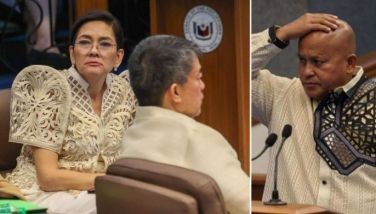The psychology of the Filipino athlete
A young Filipino doctoral psychology student is attempting to map the Filipino athlete’s mind, and determine the experience of the “bahala na” (“whatever happens, happens”) attitude.
Sheryll Casuga, who graduated with a degree in Sport Science from the University of the Philippines in 2003, is returning to the country to collect data for her dissertation on Filipino athletes. Casuga, also a certified personal trainer and sport fitness specialist at the University of California in San Francisco, is currently studying at John F. Kennedy University in Pleasant Hill, California. Her study is entitled “The Filipino Athlete’s Experience of the Bahala Na Attitude”.
“This is a unique area where we can explore what holds Filipino athletes back in international competition,” Casuga told The STAR.
“I’m very interested in bringing attention to and measuring the impact of this kind of attitude on our athletes.”
In September of 2008, Casuga received the Association for Applied Sport Psychology (AASP) Student Diversity Award, perhaps the first Filipino to receive the award for the breadth of her research in sport psychology. She has also been involved in trying to get support from universities in the Bay Area for Filipino athletes who are hoping to train there.
In April, Casuga will be scouring Quezon City and Manila from April 18 to 26 for subjects to interview on the root of the fatalistic attitude that seems to permeate not just Filipino sports, but society as a whole.
“The study will contribute to the understanding of Filipino athletes for the advancement of sport psychology in the Philippines,” Casuga says. “The study will also contribute to the understanding of how Filipinos, in general, behave in stressful situations, especially in socially evaluative situations similar to the international sporting competition environment.”
Casuga, who has been living in the US for the last six years, has made several attempts to solicit government support for her studies since 2008. She has gradually been receiving recognition for her work, which is relatively new in the Philippines, and has received help from experts she has contacted in the US. Her end-goal is to bring all her learnings to the Philippines, and help Filipino athletes break the unseen psychological barriers that hold them back.
Participants will be asked to fill out a brief questionnaire on their demographic background, and be asked questions for an hour to an hour and a half. Confidentiality and privacy will be protected.
“It would be of great benefit if we can get some national athletes to participate,” says Casuga, who has written the Philippine Sports Commission for support in this study, “We’ll be able to determine how we can make effective changes that will generate more success in future competitions.”
Interested participants may contact her through scasuga@jfku.edu.
* * *
This writer has been receiving questions from readers regarding which summer sports programs to enroll their children in, and how to determine which would be most effective.
The first thing I ask in return is: why do you want your child to take up that particular sport? If it is not something the child can see himself or herself enjoying, the challenge will be doubly hard.
Secondly, check the teacher-student ratio. If there are too many students per class, your child will not get the individualized attention that will make an impact. On great example is the Coach E basketball clinics, which guarantee one coach per five students.
The attitude of the teacher is also very important. Young children do not respond well to drill sergeants. They respond better to positive reinforcement and gentleness. When my younger son started playing organized basketball, it took him weeks to build up his strength enough to shoot lay-ups. When his confidence built up, he was able to increase his range.
Also, is their equipment suited for beginners? The Bert Lozada swim schools pioneered the creation of equipment to help small children feel safer in the pool, and thus, eliminated fear of the water. Mixing children of different ages may also be counter-productive for younger kids. In golf, for example, 12-year olds are normally bigger and stronger than 11-year olds, and it is important for coaches and parents to explain to their younger children that they, too, will hit the growth spurt when they hit adolescence.
Lastly, for parents, don’t make your children athletes to fulfill your unrealized dreams of being varsity stars, and don’t make it work for them. Love or hatred for sport can often be traced to disenchantment with parents, and having to please them. The child’s desire to play has to come from inside.
- Latest
- Trending



































